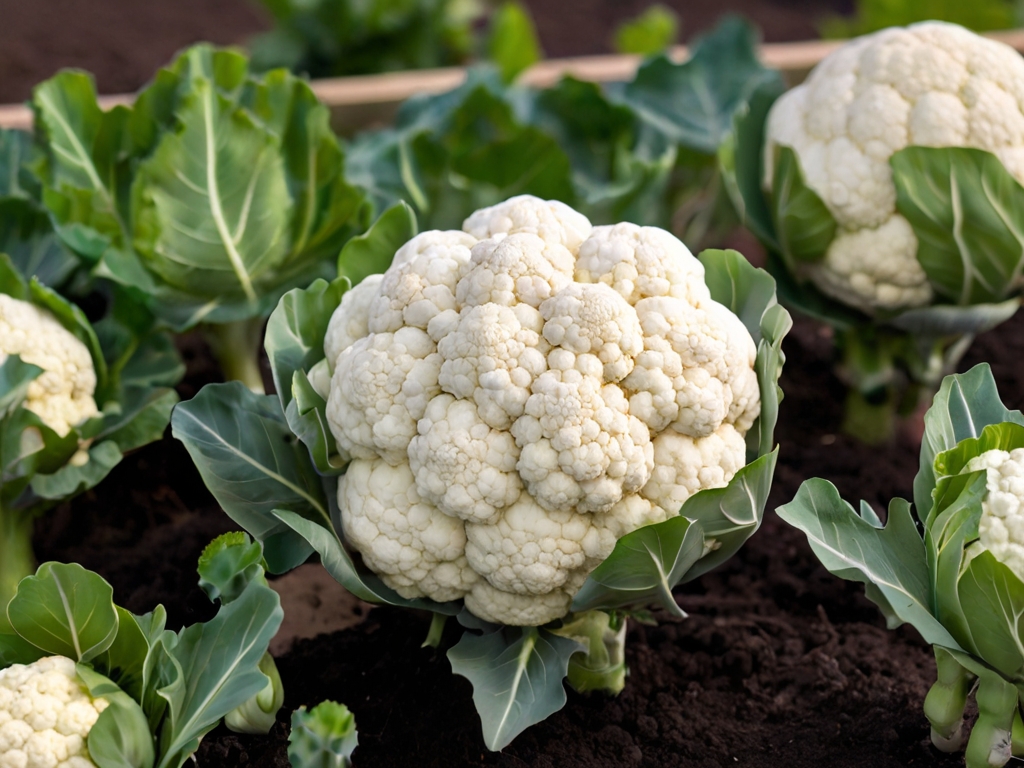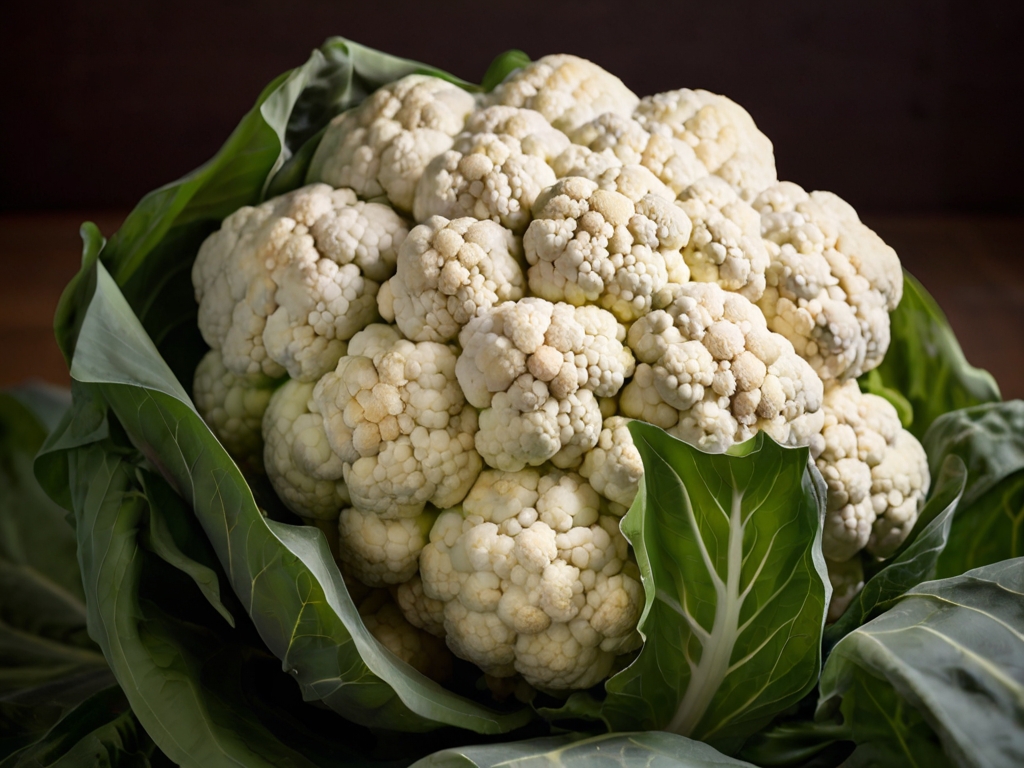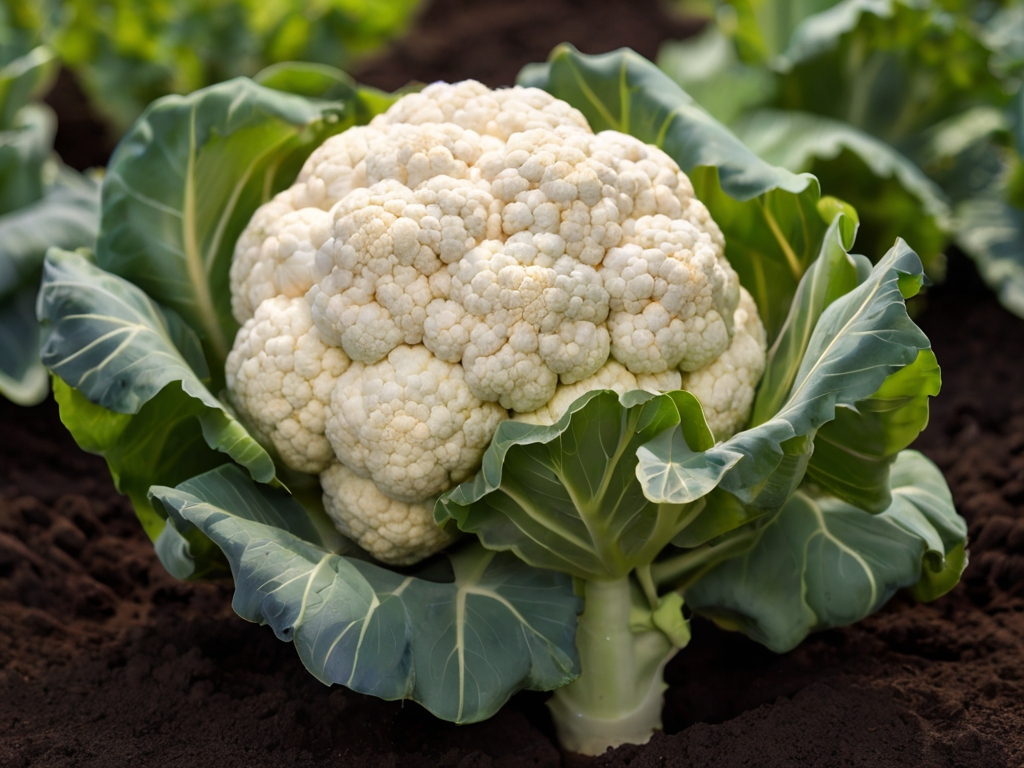By carefully selecting companion plants, gardeners can create a symbiotic relationship between the plants, where each one benefits the other in some way. One crop that can greatly benefit from companion planting is cauliflower. In this article, we will explore the benefits of companion planting for cauliflower and discuss some of the best companion plants to grow alongside it.
Table of Contents
- Benefits of Companion Planting For Cauliflower
- Choosing the Right Companion Plants for Cauliflower
- Companion Plants that Boost Cauliflower Growth and Yield
- Companion Plants that Improve Soil Health for Cauliflower
- Companion Plants that Deter Pests and Diseases
- Companion Plants that Attract Beneficial Insects
- Companion Plants that Provide Shade and Wind Protection for Cauliflower
- Companion Plants that Enhance the Flavor of Cauliflower
- Examples of Cauliflower Companion Plants and How to Plant Them Together
- FAQs
Benefits of Companion Planting For Cauliflower

Companion planting offers a range of benefits for cauliflower and other crops. One of the main advantages is improved soil health. Certain companion plants have deep root systems that help break up compacted soil, allowing water and nutrients to penetrate more easily. Additionally, some plants can fix nitrogen in the soil, essential for healthy plant growth. By incorporating these plants into your cauliflower bed, you can improve the overall fertility and structure of the soil.
Another benefit of companion planting is pest control. Some companion plants release natural compounds that repel pests, while others attract beneficial insects that prey on common garden pests. Interplanting these plants with cauliflower can reduce the risk of pest infestations and minimize the need for chemical pesticides. This benefits the cauliflower and promotes a healthier and more balanced ecosystem in your garden.
Companion planting can also lead to higher yields and better flavour in cauliflower. Certain companion plants have been shown to enhance the growth and productivity of cauliflower by providing shade, wind protection, or physical support. Additionally, some plants can improve the flavour of cauliflower by adding depth and complexity to its taste. By strategically selecting companion plants, you can create an environment that promotes optimal growth and enhances the flavour of your cauliflower harvest.
Choosing the Right Companion Plants for Cauliflower

When choosing companion plants for cauliflower, it’s important to consider their compatibility with the crop. Some plants positively affect cauliflower, while others may compete for resources or attract pests. Factors such as soil type and climate are also important when selecting companion plants. Certain plants thrive in specific conditions and may not be suitable for your garden if they don’t meet their requirements.
To choose the right companion plants for cauliflower, start by considering the specific needs of the crop. Cauliflower prefers well-drained soil with a pH between 6.0 and 7.0. It also requires full sun and regular watering to thrive. With these requirements in mind, look for companion plants with similar needs and can tolerate the same growing conditions. This will ensure that all the plants in your garden coexist harmoniously and support each other’s growth.
Companion Plants that Boost Cauliflower Growth and Yield
Several companion plants can help boost cauliflower growth and yield. One example is celery, which has a growth habit and nutrient requirements similar to cauliflower. By planting celery alongside cauliflower, you can provide physical support for the cauliflower heads and protect them from wind damage. Celery also attracts beneficial insects such as ladybugs and lacewings, which prey on aphids and other common pests that can damage cauliflower.
Another companion plant that can boost cauliflower growth is dill. Dill attracts hoverflies, natural predators of aphids, cabbage worms, and other pests commonly affecting cauliflower. By attracting these beneficial insects to your garden, you can reduce the risk of pest infestations and promote healthier cauliflower plants. Dill also has a deep root system that helps improve soil structure and fertility, making it an excellent companion for cauliflower.
Companion Plants that Improve Soil Health for Cauliflower
Improving soil health is essential for growing healthy and productive cauliflower plants. Several companion plants can help achieve this goal. One example is legumes, such as peas and beans, which can fix nitrogen in the soil. Nitrogen is an essential nutrient for plant growth, and by planting legumes alongside cauliflower, you can naturally enrich the soil with this important element. Legumes also have deep root systems that help break up compacted soil and improve drainage.
Another companion plant that can improve soil health for cauliflower is comfrey. Comfrey has deep taproots that mine nutrients from deep within the soil and bring them to the surface. These nutrients are then made available to other plants, including cauliflower, by decomposition of comfrey leaves. Comfrey also acts as a natural mulch, suppressing weeds and conserving soil moisture. Planting comfrey alongside cauliflower can create a nutrient-rich, weed-free environment that promotes optimal growth.
Companion Plants that Deter Pests and Diseases
Pests and diseases can be a major challenge when growing cauliflower. However, several companion plants can help deter these common garden problems. One example is marigold, which releases natural compounds that repel pests such as aphids, nematodes, and cabbage worms. By planting marigolds alongside cauliflower, you can create a barrier that protects the crop from these destructive pests. Marigold also attracts beneficial insects such as hoverflies and parasitic wasps, which prey on common garden pests.
Another companion plant that can deter pests and diseases in cauliflower is thyme. Thyme has strong aromatic oils that repel pests like cabbage worms and flea beetles. You can create a natural deterrent that keeps these pests at bay by interplanting thyme with cauliflower. Thyme also has antimicrobial properties that can help prevent fungal diseases such as powdery mildew, which commonly affects cauliflower. Incorporating thyme into your cauliflower bed can reduce the risk of disease outbreaks and promote healthier plants.
Companion Plants that Attract Beneficial Insects
Attracting beneficial insects to the garden is another important aspect of companion planting for cauliflower. Beneficial insects, such as bees and butterflies, are crucial in pollinating cauliflower flowers and ensuring a good fruit set. They also help control pests by preying on aphids, caterpillars, and other common garden pests. By planting companion plants that attract these beneficial insects, you can increase the chances of a successful cauliflower harvest and reduce the need for chemical pesticides.
One example of a companion plant that attracts beneficial insects is borage. Borage produces beautiful blue flowers that are highly attractive to bees and butterflies. By planting borage alongside cauliflower, you can create a haven for these important pollinators and ensure that your cauliflower plants receive adequate pollination. Borage also has a deep root system that helps improve soil structure and fertility, making it an excellent companion for cauliflower.
Companion Plants that Provide Shade and Wind Protection for Cauliflower
Providing shade and wind protection is important for growing healthy cauliflower plants, especially in hot and windy climates. Several companion plants can provide these benefits. One example is sunflowers, with large leaves that create shade and protect delicate cauliflower heads from sunburn. Sunflowers also act as a windbreak, reducing the risk of wind damage to the cauliflower plants. By planting sunflowers alongside cauliflower, you can create a microclimate that promotes optimal growth and protects the crop from harsh weather conditions.
Another companion plant that provides shade and wind protection for cauliflower is corn. Corn has tall stalks that can provide shade for smaller plants like cauliflower. It also acts as a windbreak, reducing the impact of strong winds on the cauliflower plants. By interplanting corn with cauliflower, you can create a sheltered environment that promotes healthy growth and protects the crop from extreme weather conditions.
Companion Plants that Enhance the Flavor of Cauliflower
Enhancing the flavour of cauliflower is another benefit of companion planting. Several companion plants can add flavour and depth to cauliflower dishes. One example is garlic, which has a strong and intense flavour that complements the mild taste of cauliflower. By planting garlic alongside cauliflower, you can infuse the crop with its distinctive flavour and create delicious culinary combinations. Garlic also has natural pest-repellent properties, making it a valuable companion for protecting cauliflower from common garden pests.
Another companion plant that enhances the flavour of cauliflower is dill. Dill has a unique and aromatic flavour that pairs well with the delicate taste of cauliflower. By planting dill alongside cauliflower, you can add a touch of freshness and complexity to your cauliflower dishes. Dill also attracts beneficial insects that prey on common pests, making it a valuable companion for protecting cauliflower from pest infestations.
Examples of Cauliflower Companion Plants and How to Plant Them Together
Now that we have explored the benefits of companion planting for cauliflower and discussed some of the best companion plants to grow alongside it let’s look at some specific examples and learn how to plant them together.
One example of a successful companion planting combination for cauliflower is celery, dill, and marigold. Start by preparing the soil by removing any weeds and loosening it with a garden fork or tiller. Plant the celery seedlings in rows, leaving enough space between each plant to accommodate the mature size. Interplant dill seeds or seedlings between the celery plants, ensuring that they have enough space to grow without competing for resources. Finally, sow or plant marigold seedlings around the bed’s perimeter to create a barrier against pests.
Another example is comfrey, thyme, and borage. Begin by preparing the soil as described earlier. Plant comfrey seedlings in rows, leaving enough space between each plant to allow for their mature size. Interplant thyme seedlings between the comfrey plants, ensuring that they have enough space to grow without competing for resources. Finally, sow seeds or plant borage seedlings around the bed’s perimeter to attract beneficial insects and provide shade and wind protection for the cauliflower plants.
In conclusion, companion planting offers a range of benefits for cauliflower, including improved soil health, pest control, higher yields, and better flavour. Gardeners can create a thriving and productive garden by carefully selecting companion plants based on their compatibility with cauliflower and considering factors such as soil type and climate. Whether you choose to interplant celery and dill for physical support and pest control or combine comfrey, thyme, and borage for soil improvement and beneficial insect attraction, companion planting can greatly enhance the growth and health of your cauliflower crop. So why try it in your own garden and experience the many benefits of this ancient gardening technique?
FAQs
What are the benefits of companion planting for cauliflower?
Companion planting for cauliflower can help improve soil health, deter pests and diseases, and increase yields.
What are some good companion plants for cauliflower?
Beans, peas, lettuce, spinach, and herbs like dill and chamomile are good companion plants for cauliflower.
What are some plants that should not be planted near cauliflower?
Other brassicas, such as broccoli, cabbage, tomatoes, and strawberries, should not be cabbage or r.
How do I plant companion plants with cauliflower?
To plant companion plants with cauliflower, interplant them in the same bed or row, space them appropriately, and provide adequate water and nutrients.
Can companion planting completely eliminate the need for pesticides?
While companion planting can help deter pests and diseases, it may not completely eliminate the need for pesticides. It is still important to monitor your plants and take appropriate measures to control pests and diseases if necessary.
Are there any downsides to companion planting for cauliflower?
One potential downside of companion planting for cauliflower is that some companion plants may compete with cauliflower for nutrients and water. It is important to choose companion plants with similar growing requirements and provide adequate space and resources for all plants.

